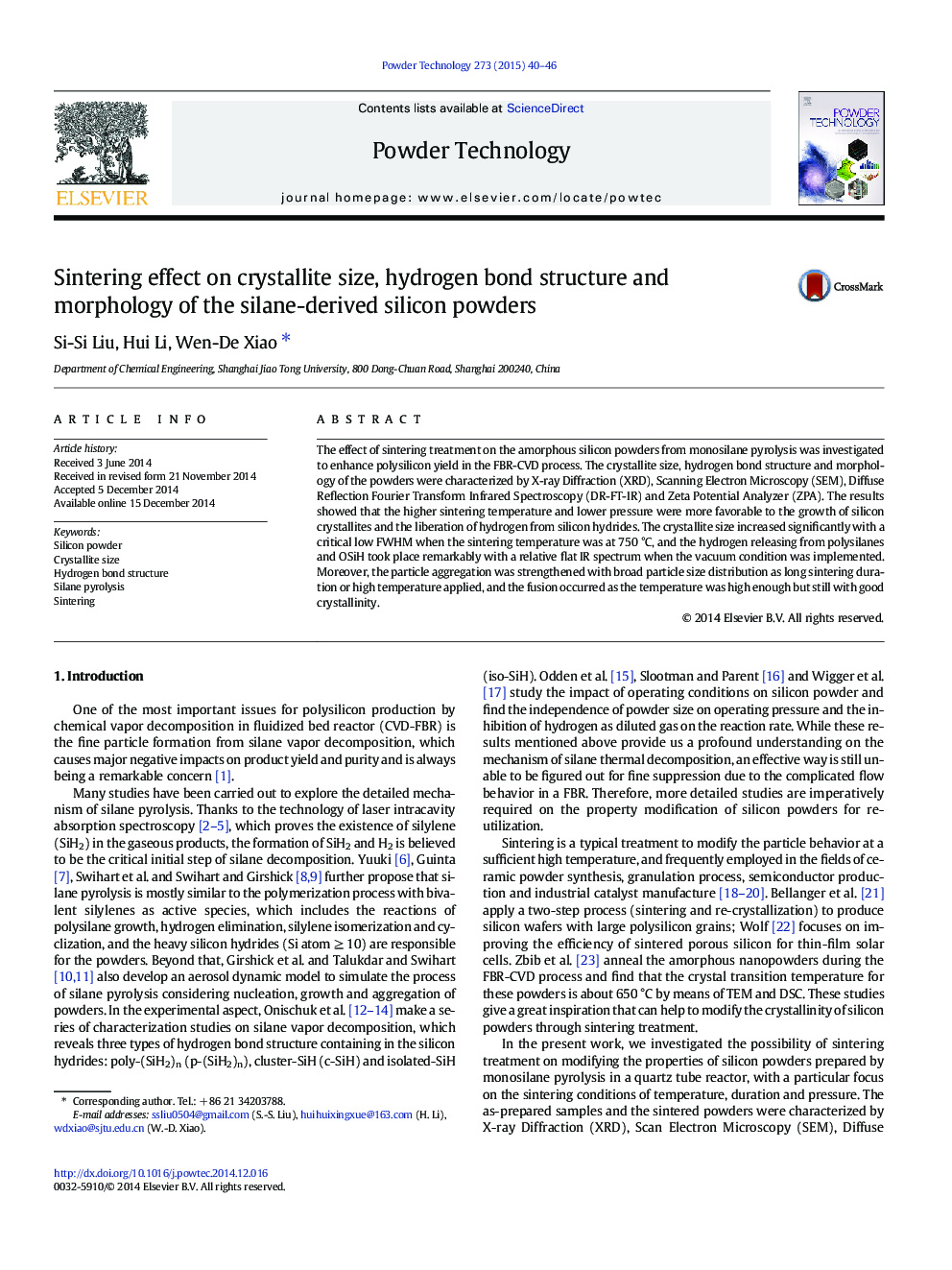| Article ID | Journal | Published Year | Pages | File Type |
|---|---|---|---|---|
| 235630 | Powder Technology | 2015 | 7 Pages |
•Amorphous silicon nano-powders are obtained by silane vapor decomposition.•Silicon powders transform to crystal ones prepared at 700 °C.•Higher sintering temperature and vacuum benefits crystallite size growth.•Higher temperature and longer duration strengthen powder aggregation.
The effect of sintering treatment on the amorphous silicon powders from monosilane pyrolysis was investigated to enhance polysilicon yield in the FBR-CVD process. The crystallite size, hydrogen bond structure and morphology of the powders were characterized by X-ray Diffraction (XRD), Scanning Electron Microscopy (SEM), Diffuse Reflection Fourier Transform Infrared Spectroscopy (DR-FT-IR) and Zeta Potential Analyzer (ZPA). The results showed that the higher sintering temperature and lower pressure were more favorable to the growth of silicon crystallites and the liberation of hydrogen from silicon hydrides. The crystallite size increased significantly with a critical low FWHM when the sintering temperature was at 750 °C, and the hydrogen releasing from polysilanes and OSiH took place remarkably with a relative flat IR spectrum when the vacuum condition was implemented. Moreover, the particle aggregation was strengthened with broad particle size distribution as long sintering duration or high temperature applied, and the fusion occurred as the temperature was high enough but still with good crystallinity.
Graphical abstractFigure optionsDownload full-size imageDownload as PowerPoint slide
